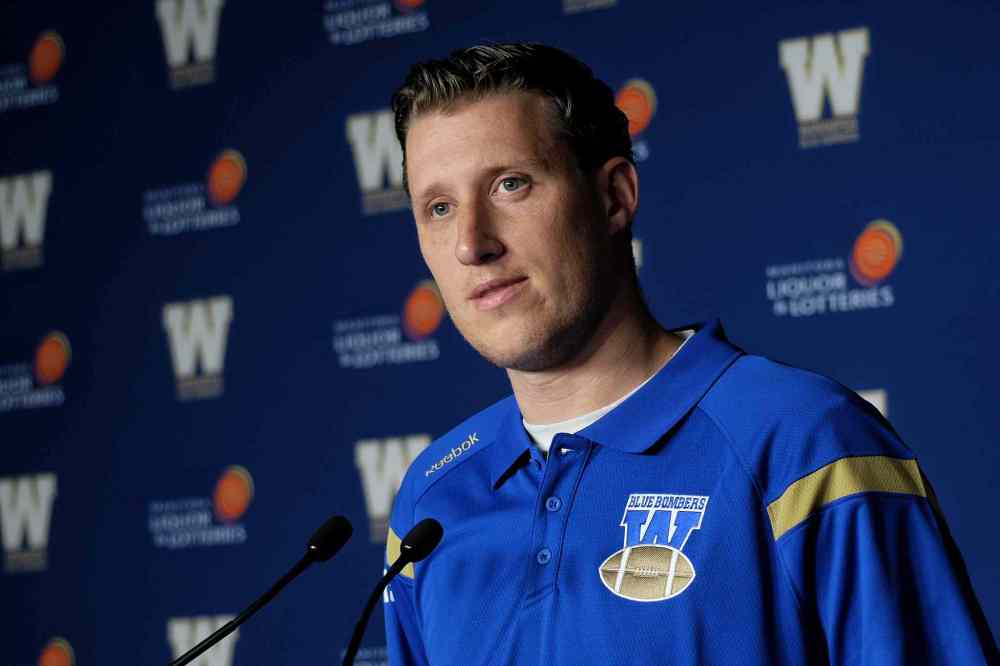Bombers in need of better direction, coaching
Advertisement
Read this article for free:
or
Already have an account? Log in here »
To continue reading, please subscribe:
Monthly Digital Subscription
$1 per week for 24 weeks*
- Enjoy unlimited reading on winnipegfreepress.com
- Read the E-Edition, our digital replica newspaper
- Access News Break, our award-winning app
- Play interactive puzzles
*Billed as $4.00 plus GST every four weeks. After 24 weeks, price increases to the regular rate of $19.00 plus GST every four weeks. Offer available to new and qualified returning subscribers only. Cancel any time.
Monthly Digital Subscription
$4.75/week*
- Enjoy unlimited reading on winnipegfreepress.com
- Read the E-Edition, our digital replica newspaper
- Access News Break, our award-winning app
- Play interactive puzzles
*Billed as $19 plus GST every four weeks. Cancel any time.
To continue reading, please subscribe:
Add Winnipeg Free Press access to your Brandon Sun subscription for only
$1 for the first 4 weeks*
*$1 will be added to your next bill. After your 4 weeks access is complete your rate will increase by $0.00 a X percent off the regular rate.
Read unlimited articles for free today:
or
Already have an account? Log in here »
Hey there, time traveller!
This article was published 02/11/2015 (3622 days ago), so information in it may no longer be current.
When you get a head start on the 2016 season — which the Bombers were just granted care of a B.C. Lions win over the weekend — the first step in the evaluation response is always what came first, the bad scheme or the player?
In a five-win and most probably a 13-loss season, the answer unquestionably lies in both camps, but if last year the focus was on acquiring better players, this year the focus should be on better everything else.
In Year 1 of this regime, it was determined the football club needed a major talent infusion to be in a conversation of Grey Cup relevance. Though a defensive co-ordinator was swapped out, the emphasis was always on a personnel upgrade. After Year 2 now, where the team regressed with these changes in tow, it’s fair to say while they still need better players, they also urgently need better direction and coaching.

In pro football, when things go awry, you tend to blame the players first. It’s never that the systems were inadequate — goes the premise — it’s that the players in it weren’t good enough. It’s why so many coaches will tell you when they have good players, they make great instructors. They know their systems are fallible, and if they don’t have the right pieces in the right places, they underperform. Yet looking at the offence and defence of 2015, when compared to 2014, the production has been very — almost eerily — similar. The players may have been upgraded over the off-season, more money may have been spent, and more comfort should have been found running these schemes, but the output on the field has been virtually the same.
With one game to play in 2015, the average net offensive production for the Winnipeg football club is currently sitting at 291 yards a game. In 2014, over an entire 18-game season, the average net offensive production was 291 yards a game. You couldn’t make those numbers up if you tried. In 2014, this football team rushed the ball an average of 84 yards a game. In 2015, once again, with one game to play, this team is rushing the ball an average of 83 yards a game. Passing in 2014 equated to 243 yards a game; in 2015, 233 yards per game. It almost seems like no matter who or what is playing in this offence, the limits and capacities have been redlined and tapped.
One of the major concerns this management team vowed to address last year were the number of sacks allowed, which broke a record with 71 plunders in 2014. Unless they surrender 15 tallies to Toronto next week, they will accomplish this goal to some degree as they currently sit at 56. Yet, considering how much less time they have spent on the football field — an average of almost seven minutes fewer per game — reducing these sack totals is a function, to some degree, of not being on the field as long.
Defensively, with a new co-ordinator at the helm, the team has surrendered the exact same number of points as last year — 481 — with a game to play, but once again, when your defence is on the field for more than 37 minutes on average — many more minutes than they had to play in 2014 — it is actually an improvement they are this close to last year’s numbers, when they are over extended on a weekly basis.
Of course, there are extenuating circumstances to every statistical analysis and multiple ways to interpret them. If the offence this year basically put up the same numbers as last year, and they did it without their starting quarterback for 10 of those games, doesn’t it mean they improved? Wouldn’t it mean that had Drew Willy played 17 out of 18 games like he did last year, the offence would have been exponentially better? Maybe. It’s very possible a full season from Willy, along with starting running back Paris Cotton, would have elevated these numbers to a degree, but then again focussing on what could have been glosses over what was the primary focus for this offence in 2015: protecting the quarterback.
If we learned one thing from last year, it was that when Willy gets time in the pocket, he can compete with most anybody in this league. We also learned that when he doesn’t have adequate protection, his numbers and performance dip dramatically, and he gets hurt. The coaching staff and management team went out last off-season and signed, drafted, cajoled, and spent close to $1 million on making him safer, yet they only got seven games out of the player who gives them the best chance to win. If a system can’t keep their franchise player upright on a year-by-year basis, no matter how many upgrades they add to the equation, then the blame no longer falls on the shoulders of those athletes: it lands on the scheme.
Doug Brown, once a hard-hitting defensive lineman and frequently a hard-hitting columnist, appears Tuesdays in the Free Press.
Twitter: @DougBrown97










